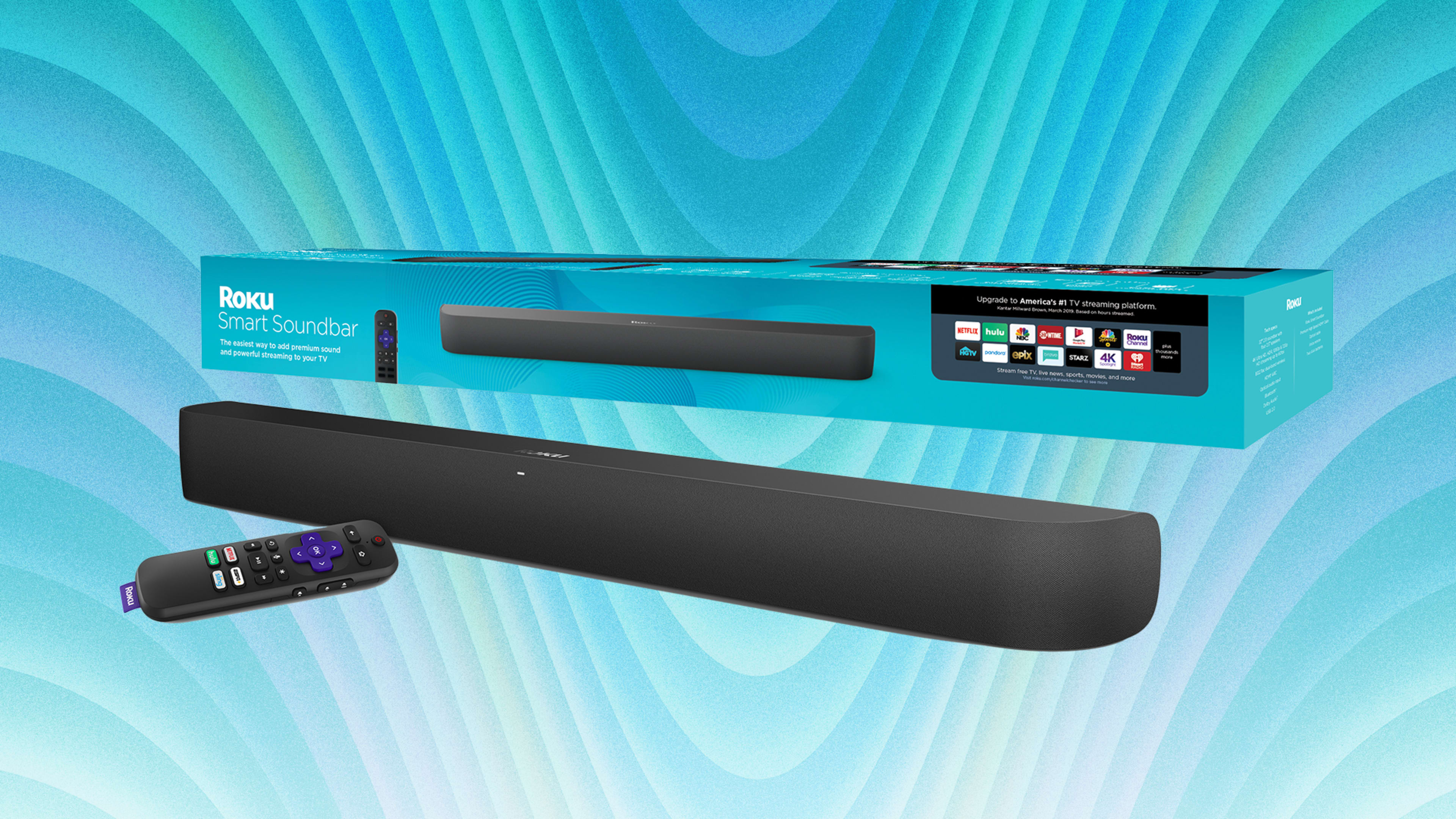Back in January 2018, Roku announced a grand vision for parlaying its streaming TV success into a broader home entertainment platform. The plan was to power not just smart TVs and streaming boxes, but speakers and soundbars with whole-home audio, all of which would be orchestrated by a voice assistant.
Little of that plan has come to fruition since. The company released a set of wireless TV speakers last fall, but they were only compatible with smart TVs running Roku’s operating system, limiting their appeal. Meanwhile, TCL abandoned plans for a Roku-powered soundbar last year, and Roku seems to have scaled back its voice control ambitions.
Now, Roku is taking a second shot at home audio with the Roku Smart Soundbar. Unlike a typical soundbar, this one also doubles as a Roku streaming video player, so you don’t have to use it with a Roku smart TV or even a separate streaming box. It’ll ship in mid-October for $180, and Roku will sell a subwoofer to pair with it for another $180. Unlike last year’s Roku wireless speakers, available only through Roku’s website, the soundbar will be on sale in Best Buy stores.

Soundbar meets streaming box
In fairness, the Roku Smart Soundbar seems pretty neat on its own. Because it effectively has the same internal hardware as a Roku Ultra streaming box, you can plug it into a TV over HDMI, and you’ll instantly get a top-notch 4K streaming video experience and much better audio than what you’d get from your TV speakers.
“What we’re trying to do at Roku is bring the same level of simplicity that we did for TV to audio,” says Mark Ely, Roku’s VP of product management.
Roku can’t take credit for the idea of a soundbar with streaming software built in. Last year, JBL and Google announced a similar product with Android TV software built in, called the JBL Link Bar. It finally started shipping in July after several delays.

Still, the Link Bar, which I just finished reviewing for another site, is a tougher sell. The soundbar alone costs $400, and a compatible subwoofer adds another $300, putting it firmly into audio enthusiast territory. Roku is rightly betting that most people don’t want to spend more on TV audio than they do on their actual televisions.
Roku’s streaming platform is also just much more popular with consumers than Android TV overall, with 30.5 million active accounts across its streaming players and smart TVs. (Google has said that Android TV has “tens of millions” of users, but about half of them are just using cable or other set-top boxes from their TV providers, and most are in Europe and Asia.)
Another audio platform
The Roku Smart Soundbar isn’t just going to be a stand-alone product, though. It’s also Roku’s biggest step yet toward building the audio platform it outlined in early 2018. In addition to the new soundbar, Roku quietly announced in an earnings call last month that it’s working with Walmart on audio products under the retailer’s Onn brand. And it’s not hard to imagine those products forming a whole-home audio system to compete with the likes of Sonos and Apple’s AirPlay 2.
The new soundbar is “really designed to be an upgradeable, expandable system, so you can start stand-alone, and it’ll expand over time,” says Ely. The problem—both for Roku and for users—is that these kinds of expandable, multi-room audio systems already exist today, and they’re much more fleshed out than what Roku is offering. Sonos, for instance, has a range of speakers and soundbars that can play synchronized audio throughout the home, and it recently partnered with Ikea to expand the system into cheaper products. Apple’s been steadily getting its AirPlay 2 system into more speakers (including the Sonos Beam soundbar) alongside its own HomePod speaker. Google and Amazon both sell a range of smart speakers with multi-room audio, and have been integrating their systems into third-party speakers and soundbars as well.
Roku, meanwhile, will only have two audio products when the Smart Soundbar launches next month, and unlike Apple, Google, and Amazon, it has no hands-free voice assistant to call its own. Instead, customers will either have to use Roku’s voice remote to play music, or use complicated voice commands on a separate Alexa or Google Assistant speaker. (“Hey Google, listen to Louis Cole on Pandora on Roku.”)
Roku’s music support also has some major holes. As of now, voice commands only work with Pandora, iHeartRadio, and TuneIn, not Spotify or Amazon Music. Apple Music, YouTube Music, and Tidal don’t support Roku at all.
That all adds up to a lot of work ahead for Roku, just to create yet another audio ecosystem that’s incompatible with all the others. For a company that’s trying to expand beyond TV software, that work might ultimately be worthwhile. And maybe Roku, which succeeded in streaming video by making it affordable and approachable, will eventually build out an audio platform with similar strengths. Right now, however, for folks who just want all their audio gear to play nicely together, the arrival of yet another contender is another obstacle.
Recognize your brand’s excellence by applying to this year’s Brands That Matter Awards before the early-rate deadline, May 3.
